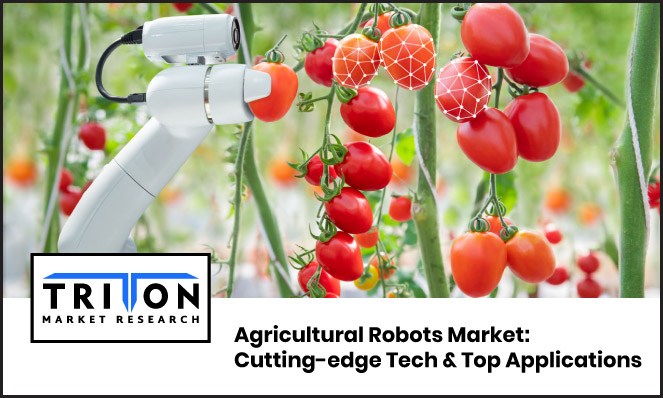



12, August 2022

The agriculture industry is plagued by real problems. The traditional farming methods struggle to keep up with the efficiencies and demand for the workforce. Hence, the introduction of automated farming attempts to counter these problems by using robotics and advanced sensing.
The Global Agricultural Robots Market was worth $4298.87 million in 2021 and is projected to reach up to $17610.54 million by 2028, growing at a CAGR of 19.98% over the forecast period 2022-2028. The rising human population, keeping track of environmental footprints, and reduction in severe labor shortage are top drivers propelling the growth of the studied market.
Further, the entrance of artificial intelligence in modern agriculture has enabled companies to launch precision techniques, aiding farming practices. For instance, products such as “Apple Packer” launched by Robotics plus allow robotic machines to pick and pack apples. Thus, increased production of technological driven products is likely to generate prospects for the market during the forecast period.
Robots are machines that work autonomously without human intervention and effectively complete tasks with greater accuracy and in less time. The introduction of automation in the agriculture industry helps the farmers to enhance their efficiency, lessen operating costs and enable round-the-clock work, thereby reducing the need for a skilled workforce. The demand for agricultural robots is primarily determined by the reduced human efforts, which directly results in the labor cost reduction during agricultural functions.
There are several benefits of using robots in farming, namely cloud seeding, fruit picking, harvesting, environmental monitoring, weed control, soil analysis, and planting seeds. This is projected to witness traction with the integration of technological advancements. In 2021, Crop Production dominated the application segment with a revenue of $1037.26 million, owing to the development of independently operating machines for different purposes like sowing, fertilization, irrigation, harvesting, etc.
The segment’s development is also a result of some notable products launched by the key market players. Some of them are mentioned below:
Some of the popular types of robots contributing revenue to the market are UAVs/drones, milking robots, automated harvesting systems, and driverless tractors. The segment uses methods that enable robot-assisted precision agriculture techniques, providing farmers with several advantages.
Further, the United States recorded the highest use of drones in agriculture for seeding, chemical spraying, crop monitoring, irrigation control and livestock management. As a result, North America held the largest regional market in 2021 with a CAGR of 19.43% and is expected to maintain its stronghold throughout the forecasting period.
The embark of technology in agriculture has solved farmers’ age-old problems and enabled them to earn higher outputs from existing lands and animals. However, huge investments and a dearth of knowledge in handling are projected to hinder the agricultural robots market’s growth.
To overcome these challenges, market players are continuously updating technology and investing in research and development activities to introduce an innovative range of agricultural robots to boost their product offerings, thereby resulting in a higher competitive rivalry.
The players continuously compete to gain a large market share and expand their operations in other regions by merging with smaller companies to acquire their customer base. For instance:

Prevalent cases of terrorist attacks in today’s world is increasing the need for severe standards of security for public safety, and the global market for biometric technology scrupulously accommoda..
Prevalent cases of terrorist attacks in today’s world is increasing the need for..